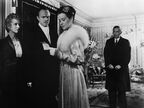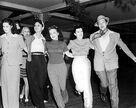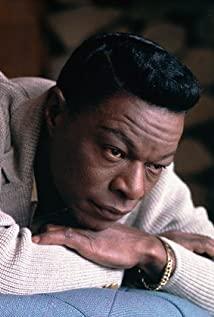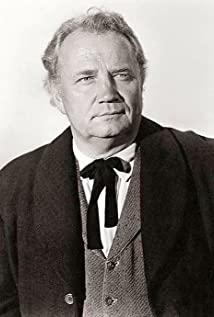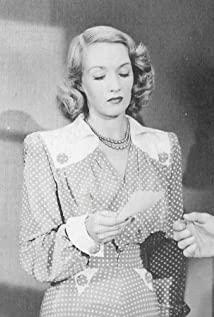The article was first published on the WeChat public account [Little Director's], please state the source for reprinting.
Film online class registration WeChat: wyy99389505
The film photographer Greg Toland believes that "Citizen Kane" is the peak of his career. The photographer veteran believes that he can learn something from the "prodigy" (ie Orson Wells), and most of the latter's achievements were made on radio broadcasts and Broadway theaters. Everyone can immediately see that "Citizen Kane" is not like most American movies of that period. There are no indifferent scenes in the film, and even the opening scenes are generally used with effective double mid shots. The shots were also shocking. This is not because the technique is new. In fact, large depth of field, low-key lighting, rich texture (also known as texture), bold composition, dynamic contrast between the front and back scenes, backlighting, ceiling-mounted scenery, side lighting, low angle, epic The juxtaposition of the vision and the macro close-up, the dizzying elevator lens, various special effects... all these are not new, but no one has used this "seven-layer cake luxury" before (borrowing James. Nalemore's words) to use them.
1. Large depth of field photography
Although Eisenstein, Renoir, and others have tried to continuously use the deep focal length before, this technique was not until the invention of the large-aperture wide-angle lens, the development of fast panchromatic film, and the large use of artificial light sources. It was successful only under the genius use of Gregg Toland and Orson Wells.
Greg Toland often experimented with large depth of field photography in the 1930s, in most cases while working with William Wyler. But the large depth of field in "Citizen Kane" is more colorful than Wyler's use of this technique. Large depth of field photography involves the use of a wide-angle lens, which often exaggerates the distance between characters, and this is an appropriate symbolic analogy for a film that expresses a story of separation, alienation, and loneliness.
At the same time, because the wide-angle lens makes each level of the picture from the nearest to the farthest, the focus is clear, and there is no illusion of surrounding things due to highlighting a certain image, so when all the characters are equally clear, The ambiguity is even more serious.
Since the deep focal length can simultaneously record and compare events occurring at different distances from the camera, the large depth of field can also provide a lot of information. The lens of "was reflected on the windowpane, so while we heard the conversation over the yelling and music, we saw the dance again. It is this multi-information characteristic that has caused another tendency of large depth-of-field lenses, which is to encourage the audience. Actively dig out information from a lens. For example, in the scene where Susan tried to commit suicide, the opening shots hinted at a causal relationship. Susan took some deadly drugs and fell into a coma lying on the bed in her semi-dark room. At the bottom of the screen, in close-up distance, there is an empty glass and a bottle of medicine; in the middle of the screen lies Susan, she is breathing weakly; at the upper end of the screen, Kane is outside the door Knocked on the door, then rushed open the door and walked into the room. The hierarchical arrangement of this scene scheduling is a visual condemnation:
(1) The deadly drug was taken by (2) Susan Alexander Kane, which was caused by (3) Kane's inhumanity.
However, the depth focal length also puts forward new requirements, that is, it needs to have visual content in width, depth, and height, because a wide-angle lens not only has a wider field of view than ordinary lenses, but also the scene is in focus, especially when the scenery requires a ceiling. Thanks to the ceiling, there is the possibility of shooting low-angle interior shots. As mentioned earlier, the possibility of this technology provides an important theme motivation for the film.
2. Scene scheduling
The stage is Wells's preference. When he was young, he entered a progressive preparatory school where he directed and performed more than 30 plays. Shakespeare was his favorite playwright. In 1930, when Wells was 15 years old, he left school forever.
As a result of inheriting a sum of money, he traveled to Europe. There, he broke into the Gate Theatre in Dublin, claiming to be a famous Broadway star. The managers didn't believe him, but had a good impression of him, so they hired him. In the following year or so, Wells served as a director and performer in many classic stage plays (mostly from the Elizabethan era).
When he returned to the United States in 1933, he tricked him into a job touring with one of the main stage stars at the time, Catherine Cornell. Most of their performances are works by Shakespeare and Bernard Shaw. In New York in 1935, Wells and the ambitious stage producer (and later a director and actor) John Hausman joined forces with the support of the Federal Theater Project (one of the many public works in the New Deal). The stage of the 1930s was very politically left-wing. Wells was a liberal throughout his life. He was a passionate supporter of Roosevelt and, like most intellectuals of that era, he was very supportive of the New Deal. He assisted President Roosevelt in writing several radio speeches.
In 1937, Wells and Hausman formed their own theater company-Mercury Theater. Several of their performances were praised for their brilliant talents, the most notable of which was the anti-fascist play "Caesar the Great" in modern costumes. Not only does Wells act as an actor and director, he also designs sets, costumes and lighting. The influential theater critic John Mason Brown declared it to be "a work of genius." Critic Elliott Norden described it as "the most moving Shakespeare of this generation."
Wells used the money he earned as a broadcast star to fund his theater company. In the late 1930s, in his spare time, he earned about $3,000 a week on the radio, two-thirds of which went back to Mercury Theater. This troupe is a small business activity, often on the verge of collapse. In 1939, after its first failure, the Mercury Troupe shut down. Wells initially went to Hollywood just to make some cash so that he could return to New York to resume Mercury Theatre.
Since Wells comes from the world of the stage, he is an expert in dynamic scheduling of actions. For the art of scene management, the perspective is a more effective and more dramatic method, so there are relatively few close-up shots in his films. Most of the frames are compact and closed. Most of them are still composed by depth, with important information in the foreground, middle ground and background. The range of contact between the characters is the ballet-style choreography, which implies the relationship of their changing advantages. As we will talk about below, the lighting style of "Citizen Kane" benefits more from the stage than the movie. And Wells's long shots also come from the action requirements of a unified space on the stage. For example, in a scene in the first half of the film, it was shown that Kane, Bernstein, and Li Lan took over the old-fashioned office of the Questioner (Young Kane just bought this conservative newspaper because he thought Running a newspaper may be fun), workers and assistants are constantly moving in and out of the screen, carrying furnishings, furniture, and personal belongings, while Kane is talking to the steadfast editor-in-chief, Mr. Carter, who will soon be fired (dickens-style anger). Spit-splashing character), having a weird conversation.
To better understand the complexity of Wells's scene scheduling, it is to analyze a shot. Let’s take a shot of Thatcher’s memories in Mrs. Kane’s dormitory as an example and analyze it as follows:
A. The distance relationship between the lens and the camera: This is a large depth of field lens, which extends from the middle distance of the foreground to the large distance range of the background. The camera keeps a personal distance from Thatcher and Mrs. Kane, a social distance from Old Kane, and a public distance from Little Kane. The child was playing happily, and often shouted some words that did not follow the preface, such as "Long live the alliance!" Old Kane stubbornly refused to accept the plan to entrust the child to the bank for custody, and Thatcher and Mrs. Kane Listening impatiently.
B. Angle: The camera is slightly off because the floor is exposed more than the ceiling. This angle implies a little fateful atmosphere.
C. Optical lens and color filter: A wide-angle lens is used here to capture its depth of field. The lens exaggerates the distance between the characters. No color filters are used obviously.
D. Lighting style: the interior scene was shot with a moderately high profile; the exterior scene, mostly dazzling white snow, was extremely high profile.
E. The dominant contrast: Because Kane is in the center of the frame, and his black clothes are in high contrast with the dazzling snow, he is likely to attract our attention first, and he is also the subject of the controversy in the foreground.
F. Secondary contrast: Then our eyes moved from Old Kane to Thatcher and Mrs. Kane, and the spotlighted document they were about to sign.
G. Composition: This picture is vertically divided into two, a tug of war, with two people on the left and two on the right. The foreground table is balanced with the background table and wall. The segmentation of the composition isolates the characters.
H. Texture (or texture): The picture has a strong texture, including the nail holes in the rough wall panels, the old-fashioned furniture and the subtle facial expressions of the indoor characters.
I. Form: The lens is a closed form, and its carefully arranged and coordinated components imply a self-satisfied stage scene framed by the stage frame.
3. Camera movement
From the beginning of his film career, Wells has been a master of moving cameras. In "Citizen Kane", the camera movement is generally consistent with the vitality of the youth. Still cameras are often associated with illness, old age, and death. These sports principles also apply to Kane's sports. As a young man, he was an energetic whirlwind, and he almost didn't have time to finish a sentence, his attention was diverted, and he flew to another place. But as an old man, he almost groaned every time he took a prudent step. He often stands or sits motionless, seemingly boring and exhausted, especially in those scenes where Susan is with Susan.
No one has ever used a lift as spectacularly as Wells. That wonderful elevator lens embodies important symbolic ideas. For example, after learning of Kane’s death, Thomson tried to interview Susan Alexander. This paragraph begins with a downpour. We saw Susan’s posters and photos promoting her as a singer in a nightclub. When thunder resounded on the vocal cords, the camera rose and went through heavy rain until the roof, and then rushed past a neon sign "Pasture" and down to the skylight. At this time, the dazzling lightning blocked the camera passing through the skylight. , And then descended straight to the empty nightclub, Susan leaned on a table, drunk as drunk, sad and depressed. Both the camera and the reporter encountered many obstacles-rain, billboards, and the walls of the building. These obstacles must first be cleared before we can see Susan, let alone hear her. The elevator shot embodied a brutal invasion of private life, ignoring the obstacles that Susan, who was immersed in grief, set up around her.
Like all movies, "Citizen Kane" is flawed. For example, in the second half of the film, in the scene where Susan finally leaves Kane forever, in anger, the old man destroyed Susan's bedroom and scattered its contents. Wells obviously wanted to convey Kane's anger through the pure action of the old man destroying the room. But the lens is often too long, and the camera is too far away from the action. If Wells placed the camera closer to make the movement more dominant, then the violent intensity of Kane's anger might be communicated more effectively. He should also switch more in order to convey fragmented thoughts. The movement must be compatible with its subject matter, otherwise the movement will appear too much or too little.
4. illumination
Since Wells usually lays the lights on his own in theater performances, he believes that the film director is also responsible for the lighting. Out of curiosity, Toland let him go and let Wells decide most of the lighting design, but quietly instructed the photographers to make the necessary technical adjustments.
From a photographic point of view, "Citizen Kane" contributed to a revolution, that is, it secretly challenged the classic ideal of unobtrusive and transparent style.
A. In traditional movies in the past, what was pursued was an unobtrusive transparent style and a soft light effect. But the superb technique in "Citizen Kane" is extremely stylized: the lighting of high-intensity arc lights creates a sharp, clean and moderate high profile-this is shown in the first half of the film (after the newsreel). That is to describe the rise of Kane in American public life in his youth and the scene of showing him as a young publisher full of fighting spirit. At this time, Kane is a person who takes the initiative to work and does not need to be urged. He is full of fighting spirit, an idealist, a reformer, a man with vigorous energy, and an image of a giant.
B. Continuous use of low-key lighting, it is lower than any previous lighting. From a production point of view, when shooting with a deep focal length, low-key lighting is a more economical and preferable method, because a deep focal length lens requires a lot of light to hit.
Bright scenery. To see more things clearly in one lens, more things must be highlighted. Naturally, the fewer objects that need to be highlighted, the more economical the production. In addition, more importantly, the low-key lighting used in this deep focal length has a stronger impact, which forms an expressionist style, which has a great theme and dramatic effect. Great function. As Kane gets older and more cynical (in the second half of the film's story), the lighting becomes darker and there is a stronger contrast between light and dark. All of the above seem to be plunged into a permanent night, only the spotlight's spot penetrates the suppressed darkness, revealing a chair, a sofa, and a statue. The atmosphere is cold, humid and impenetrable, and the darkness is enveloped in a layer of speechlessness. Of evil. At this time, Kane had betrayed his promise and became a despicable, cruel tyrant. There, this symbol of hope has become an image of failure: indifference, withdrawn.
The sharp contrast between these two lighting styles shows the polarization of Kane's character.
In addition, spotlights are also used in closer shots to achieve a symbolic effect: Kane’s mixture of decent and corruption is hinted by contrasting light, sometimes his face is divided into two halves, half illuminated brightly. Half of it is hidden in the dark, and what is hidden is often more important than what is revealed. For example, in Bernstein’s flashback, Kane, who was full of ideals, told Li Lan and Bernstein that he wanted to publish a “declaration of principles” on the front page, promising readers that he would become a citizen and a person for them. An honest, tireless fighter who fights for his rights. But when he leaned down to sign the document, his face suddenly plunged into the darkness-a bad omen for his later character.
In Susan’s reminiscence passage, the two quarreled after the opera’s first performance. When Kane ignored Susan’s objection, took a step forward and said "you must sing on" in an indisputable command tone, a A huge shadow (Kane's figure) was cast on Susan's face, which emphasized the fact that Susan was ruled by Kane and highlighted the latter's sense of depression.
View more about Citizen Kane reviews



